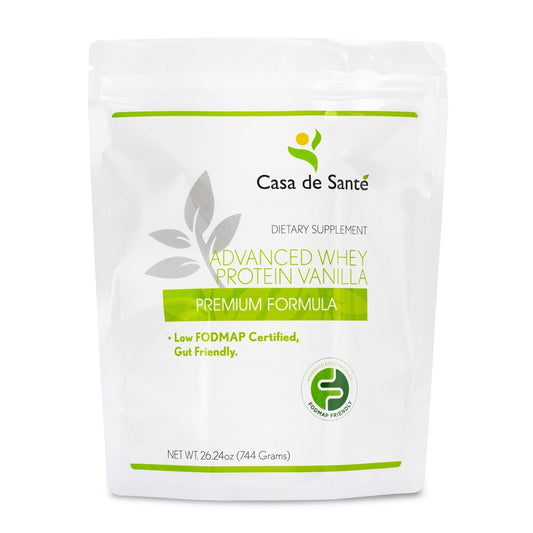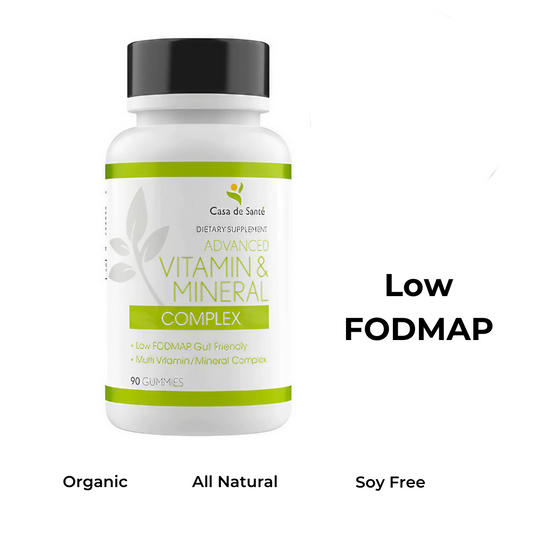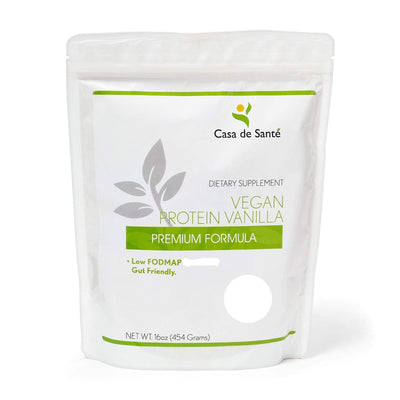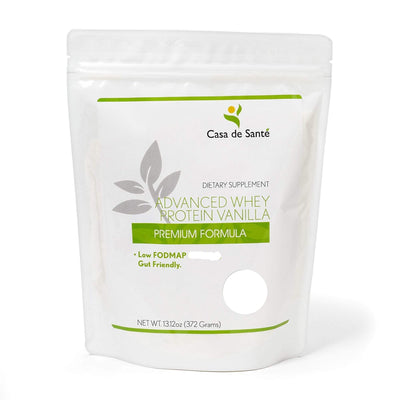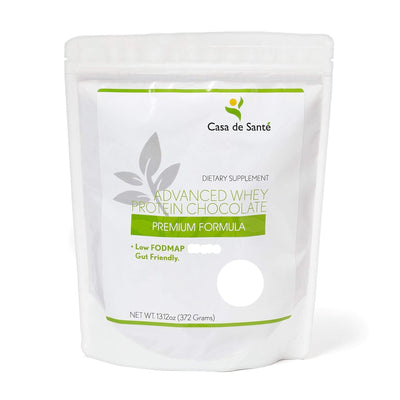Retinol Mandelic Acid: How to Combine for Glowing, Smooth, and Healthy Skin
I've always been fascinated by the science behind glowing healthy skin. Two ingredients that keep popping up in skincare conversations are retinol and mandelic acid. Both promise smoother brighter skin but they work in different ways and bring unique benefits to the table.
If you’re curious about how these powerhouse ingredients can transform your routine you’re not alone. I love exploring how combining or alternating actives like retinol and mandelic acid can target everything from fine lines to uneven texture. Let’s dive into what makes these ingredients so popular and why they might deserve a spot in your skincare lineup.
What Is Retinol Mandelic Acid?
Retinol mandelic acid refers to the strategic use of retinol and mandelic acid together in a skincare routine. Retinol, a vitamin A derivative, accelerates cell turnover and encourages collagen production—these actions help smooth fine lines and address hyperpigmentation. Multiple peer-reviewed clinical studies describe retinol's impact on improved skin texture when used consecutively for at least 12 weeks [1].
Mandelic acid, an alpha hydroxy acid (AHA) derived from bitter almonds, gently exfoliates by loosening dead skin cells. Its molecular weight is 152.15 g/mol—making it larger than glycolic acid and resulting in slower skin penetration [2]. Dermatology journals report that mandelic acid suits sensitive and acne-prone complexions due to lower irritation rates than other AHAs.
Combination routines featuring both molecules may target multiple skin concerns, for example uneven tone, roughness, fine wrinkles, and congestion. I prefer introducing each ingredient separately, monitoring for redness or scaling before considering concurrent application. Scientific reviews note that layering retinoids with mandelic acid nightly increases exfoliation but raises the risk of dryness or sensitivity if overused [3].
Next Step: Upgrade Your Skin Care
Ready to put these tips into action? Explore Dr Onyx MD PhD physician-grade skin care formulas here → https://casadesante.com/collections/physician-skin-care
- Zasada, M., Budzisz, E. (2019). "Retinoids: Active molecules influencing skin structure formation in cosmetic and dermatological treatments." Advances in Dermatology and Allergology, 36(4), 392-397.
- Fabbrocini, G., et al. (2009). "Mandelic acid: An alpha hydroxy acid with relevant antibacterial properties." Journal of Cosmetic Dermatology, 8(2), 123-128.
- Draelos, ZD. (2012). "The Science Behind Skin Care: AHAs and Retinoids." Cosmetic Dermatology, 25(2), 74-80.
How Retinol Mandelic Acid Works
Retinol and mandelic acid both target key aspects of skin renewal, but their mechanisms differ. I find that retinol, a vitamin A derivative, enters cells to interact with specific receptors. This action increases epidermal cell turnover, which diminishes the appearance of fine lines, evens tone, and addresses consistent hyperpigmentation. Clinical studies indicate that retinol at low micromolar concentrations can stimulate collagen synthesis and reduce visible wrinkles after 12 weeks (Sivamani et al., 2019).
Mandelic acid, an aromatic alpha hydroxy acid, works on the skin’s surface. I use mandelic acid for chemical exfoliation, with its larger molecular size causing slower, gentler penetration compared to glycolic or lactic acid. Published research shows mandelic acid assists with mild desquamation, unclogs pores, and decreases roughness while reducing irritation risks seen with other acids (Fabbrocini et al., 2016).
Combining retinol with mandelic acid allows me to address multiple skin concerns at once. Retinol accelerates deeper skin changes, and mandelic acid enhances surface exfoliation. The result is smoother, brighter skin without excessive dryness or sensitivity, which commonly occurs when using these actives alone. I stagger application frequency and monitor for irritation to maintain skin barrier health, especially when first introducing both actives to my routine.
Key Benefits of Retinol Mandelic Acid
Retinol paired with mandelic acid targets several skin concerns at once. I combine these ingredients to support smoother, clearer, and more resilient skin while minimizing irritation.
Improves Skin Texture
Retinol and mandelic acid both improve skin texture through distinct mechanisms. I rely on retinol for its ability to speed up cell turnover, softening rough patches and refining the surface of my skin. Clinical research documents significant reductions in coarse facial lines and noticeable increases in skin smoothness with retinol used over 12 weeks at concentrations as low as 0.1% (Kafi et al., 2007). Mandelic acid exfoliates gently, dissolving surface debris and decreasing visible flakiness, especially in sensitive or reactive skin types. Studies show mandelic acid, at concentrations between 5% and 10%, smooths skin without causing the redness common with more aggressive alpha hydroxy acids.
Addresses Acne and Blemishes
Retinol and mandelic acid together address both active acne and post-breakout discoloration. I use retinol to unclog pores by promoting desquamation which limits blockages that trigger breakouts. Peer-reviewed findings note a reduction in inflammatory lesions when retinoids are used nightly for eight weeks (Zaenglein et al., 2016). Mandelic acid’s antibacterial and keratolytic actions make it ideal for targeting blackheads and post-inflammatory hyperpigmentation. Clinical reports show regular use of mandelic acid decreases papule count and lightens dark spots, with fewer side effects than glycolic or lactic acids.
Reduces Signs of Aging
Retinol and mandelic acid both reduce visible signs of photoaging. I depend on retinol’s proven ability to stimulate new collagen synthesis, reduce wrinkle depth, and fade age spots by inhibiting excess melanin production. Published trials demonstrate significant wrinkle improvement and improvement in skin tone with 0.025–0.1% retinoids after 3–6 months (Kang et al., 1995). Mandelic acid’s mild exfoliation boosts radiance and increases cell turnover, softening fine lines and supporting brighter, more even skin. Used consistently, this duo maintains firmness, improves skin clarity, and helps combat premature aging with less risk of irritation compared to stronger actives.
Potential Side Effects and Precautions
Combining retinol and mandelic acid in a skincare routine can increase the likelihood of irritation. I often notice redness, dryness, peeling, and stinging when introducing both ingredients too quickly on sensitive skin types. Studies list erythema and flaking as common side effects of topical retinoids, especially at higher concentrations or when used with exfoliating acids.
Photosensitivity frequently increases with retinol and alpha hydroxy acids like mandelic acid. I always apply a broad-spectrum sunscreen during the day when using these actives, since both ingredients can lower the skin’s natural UV defense. Lack of photoprotection may amplify the risks of sunburn and post-inflammatory hyperpigmentation.
Allergic reactions sometimes occur, though less frequently. I spot-test new formulas before regular use to check for swelling, severe redness, or itching, as these symptoms could signal an allergy or contact dermatitis. Patch testing behind the ear or on the inner arm for 24 to 48 hours helps determine skin compatibility.
Adverse effects usually subside when application frequency is reduced or usage is paused. I often recommend alternating nights or spacing out the days between retinol and mandelic acid applications, particularly for those new to these actives or with compromised skin barriers.
Medical consultation remains essential for anyone pregnant, breastfeeding, or with conditions like eczema or rosacea. Dermatologists can recommend concentrations or regimens less likely to cause harm in these groups.
| Side Effect | Typical Onset | Frequency (%) | Contributory Ingredient |
|---|---|---|---|
| Redness | Within days | 10–40 | Retinol, Mandelic acid |
| Dryness/Peeling | First 2 weeks | 20–60 | Retinol, Mandelic acid |
| Photosensitivity | During use | 100 | Retinol, Mandelic acid |
| Stinging/Burning | Initial uses | 5–20 | Retinol, Mandelic acid |
| Allergic Reaction | Immediate–2 days | <5 | Retinol, Mandelic acid |
How to Use Retinol Mandelic Acid in Your Skincare Routine
I use both retinol and mandelic acid to refine skin texture and address uneven tone, but correct timing and layering matter for safe and effective results. Employing these potent actives the right way helps prevent common side effects like irritation and dryness.
Recommended Usage Frequency
I start with low concentrations of retinol (0.2%-0.5%) or mandelic acid (5%-10%), applying each ingredient 2-3 nights per week. Gradual introduction lets my skin adjust with less risk of sensitivity. I alternate application—using mandelic acid on one night and retinol on another—when first combining both ingredients. Dermatology studies support this staggered approach, reporting decreased incidences of irritation compared to simultaneous use. After 4-6 weeks, if no visible irritation occurs, I consider increasing frequency up to every other night as tolerated. I use both ingredients at night only, since they heighten sun sensitivity (Journal of Clinical and Aesthetic Dermatology, 2017).
Compatibility With Other Ingredients
I find that pairing retinol and mandelic acid with barrier-supporting agents minimizes dryness and redness. I use buffers like ceramide creams, hyaluronic acid serums, or squalane oil to keep my skin hydrated and protected. I avoid layering other strong actives like pure vitamin C, benzoyl peroxide, or stronger acids (glycolic, salicylic) in the same routine, since this combination increases risk of adverse reactions. Gentle cleansers and fragrance-free moisturizers reduce interference and preserve skin barrier function. I always apply sunscreen every morning, since both retinol and mandelic acid raise photosensitivity levels.
Who Should Consider Retinol Mandelic Acid?
People seeking improvement in skin texture, visible signs of aging, or persistent breakouts may benefit from a routine that includes both retinol and mandelic acid. I see best outcomes for those with these specific goals:
- Mild to Moderate Signs of Aging
Individuals experiencing fine lines, early wrinkles, or loss of firmness—for example, visible crow’s feet, forehead lines, or dullness—often report enhanced smoothness and brightness when using retinol paired with mandelic acid. Clinical evidence supports using retinol for its collagen-boosting effects and mandelic acid for gentle exfoliation to increase radiance.
- Acne-Prone or Congested Skin
People with frequent clogged pores, post-acne marks, or minor blemishes—like blackheads on the nose, jawline breakouts, or stubborn textural spots—can achieve clearer skin using these actives together. Studies indicate mandelic acid effectively reduces pore blockages while retinol accelerates turnover and fades discoloration.
- Uneven Tone and Pigmentation
Individuals managing mild hyperpigmentation, sun spots, or uneven skin tone—such as scattered brown spots or patchy complexion—can see gradual improvement in overall brightness. Published trials associate retinol with lighter pigmentation over time, while mandelic acid’s exfoliation speeds post-inflammatory fading.
- Resilient, Non-Sensitive Skin Types
Those with non-reactive, resilient skin—like people who tolerate other actives such as niacinamide or mild exfoliants—are most able to integrate retinol and mandelic acid without excessive irritation. I’ve found these users handle alternating or combined use for more rapid results without significant discomfort.
- Individuals Committed to Sun Protection
Consistent daily sunscreen use must accompany any regimen with retinol and mandelic acid. I recommend this approach to those who reliably use at least SPF 30, since both ingredients cause photosensitivity and increase susceptibility to UV-induced pigmentation.
Individuals with extremely sensitive, barrier-impaired, or inflamed skin—examples include diagnosed eczema, rosacea, or compromised skin from medical treatments—should avoid this combination. Pregnant and breastfeeding individuals aren't advised to use retinol due to known safety concerns (Dermatology, Journal of Clinical and Aesthetic Dermatology).
Top Products Featuring Retinol Mandelic Acid
I look for formulations that combine encapsulated retinol with mandelic acid for multi-targeted skin benefits. These products often contain 0.1% to 0.3% pure retinol, gently released for reduced irritation, paired with 5% to 10% mandelic acid to exfoliate and improve skin texture. By using this combination, I notice smoothing of fine lines, brighter skin, and fewer blemishes within 8 to 12 weeks, which aligns with research on retinoid and alpha hydroxy acid efficacy.
Serums in aqueous or gel bases often provide lightweight hydration and faster absorption. I find that these work best when paired with ceramide-rich moisturizers to support barrier repair. Cream-based options containing both actives offer a richer feel that suits drier skin types, and these formulas sometimes add hyaluronic acid to combat potential dryness.
For beginners, I recommend products with time-released retinol and less than 7% mandelic acid, since this reduces the likelihood of irritation without compromising results. If I've established a basic tolerance, higher-strength combinations—such as those with 0.5% retinol—can then be used up to 3 nights per week. Night-use formulations prove most effective due to retinol's photosensitivity and acid pH optimization.
Here's a summary of feature types and concentrations frequently found in these advanced formulations:
| Product Type | Retinol Concentration | Mandelic Acid Concentration | Additional Ingredients | Texture |
|---|---|---|---|---|
| Serum | 0.1–0.3% | 5–10% | Ceramides, hyaluronic acid | Lightweight |
| Cream | 0.3–0.5% | 5–8% | Emollients, anti-irritants | Rich |
| Gel | 0.2–0.5% | 7–10% | Niacinamide, panthenol | Fast-absorbing |
I always avoid pairing these types of products with other strong exfoliating acids or benzoyl peroxide, which heightens irritation. By selecting evidence-based combinations of retinol and mandelic acid, I create a routine that targets roughness, uneven tone, and visible aging without excessive redness or sensitivity.
Key Takeaways
- Retinol and mandelic acid are effective skincare actives that work differently—retinol accelerates cell turnover for smoother skin, while mandelic acid provides gentle exfoliation suitable for sensitive types.
- Combining retinol and mandelic acid can address multiple skin concerns simultaneously, including fine lines, uneven texture, acne, and hyperpigmentation.
- Gradual introduction, alternating usage, and pairing with soothing ingredients help minimize the risk of irritation, dryness, and photosensitivity.
- Daily sunscreen use is essential when using retinol and mandelic acid, as both increase the skin’s sensitivity to UV radiation.
- Ideal candidates are those with resilient skin seeking anti-aging or acne benefits, while people with highly sensitive or barrier-impaired skin should avoid this combination.
Conclusion
Exploring the synergy between retinol and mandelic acid has truly transformed the way I approach my skincare routine. By understanding their unique properties and learning how to use them thoughtfully I’ve discovered that it’s possible to achieve smoother brighter skin without unnecessary irritation.
If you’re considering adding these actives to your regimen remember to start slow listen to your skin and always prioritize sun protection. With patience and consistency you can unlock the full potential of this dynamic duo and reveal your healthiest complexion yet.








